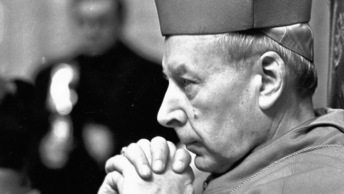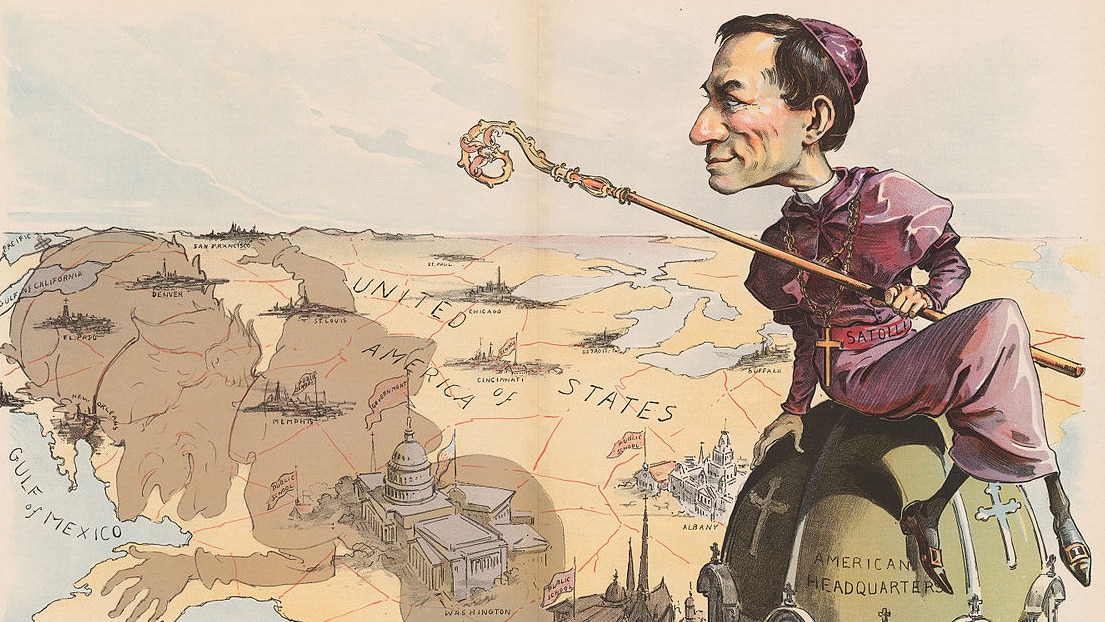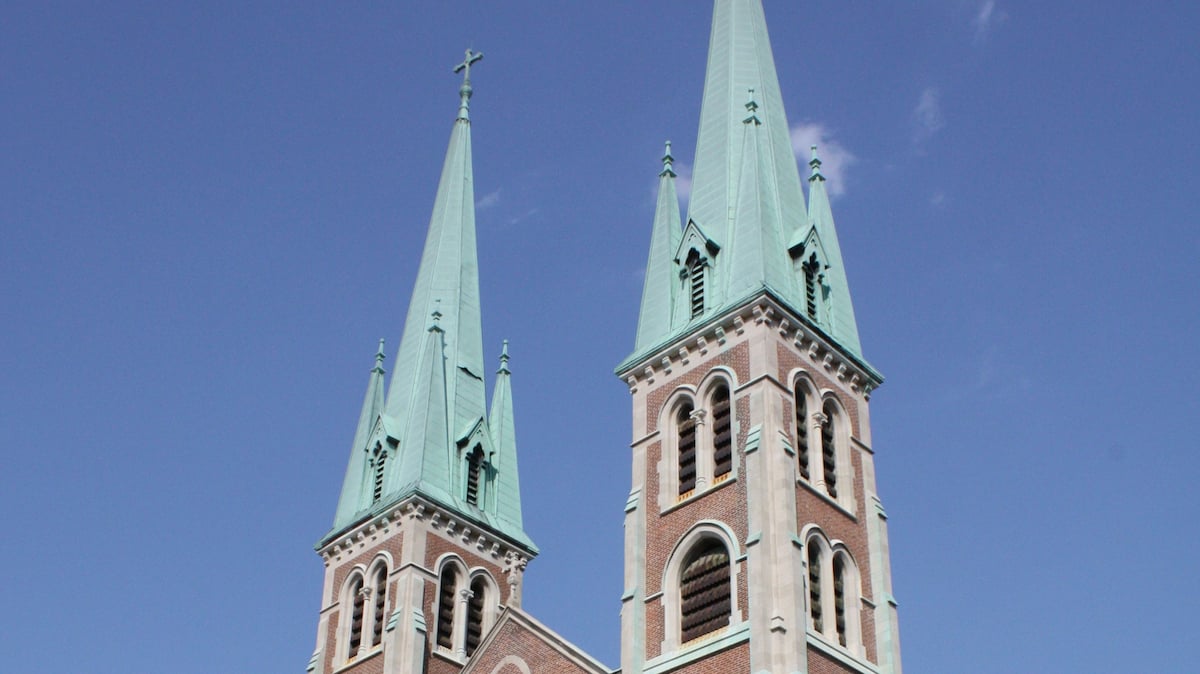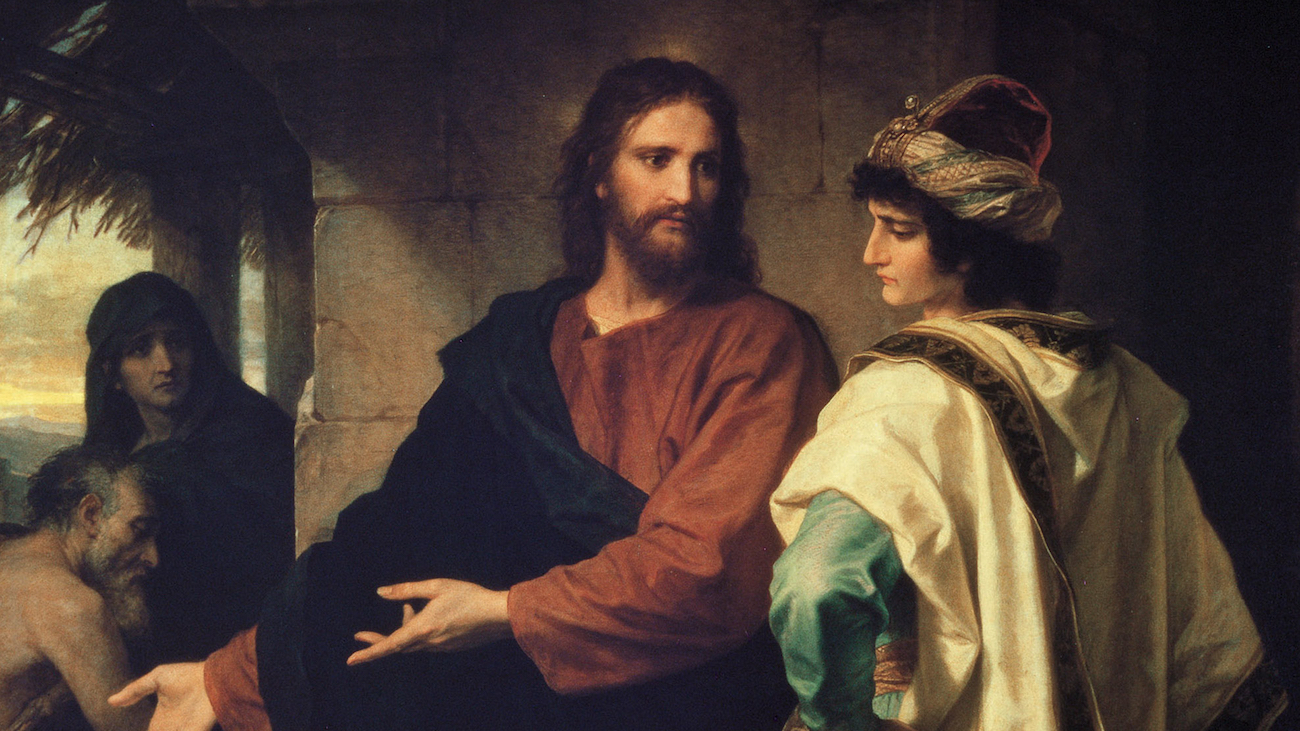Perhaps some of you have found yourself in a position where you would like to defend the Catholic faith, but were not able to recall facts that might help you to do so. In other cases, perhaps you are just looking for a little extra learning about your Faith. For those reasons, I have put together some common misconceptions I have heard about Catholicism and some explanations meant to clarify them. These are not my words, but rather they were taken from various other sources including Jamie Frater, Tito Edwards, Karen L. Anderson, Marcel JeJune, Archbishop Fulton Sheen, and Elizabeth Giddons Valverde. I hope this collection helps you grow in that direction.
Misconception: Catholics worship Mary and, are therefore, committing idolatry
In Catholic theology there are three types of worship – one of which is condemned in the Bible if offered to anyone but God:
1) Latria – this is adoration which is given to God alone – giving this type of worship to anyone else is considered to be a mortal sin and it is the idolatry condemned in the Bible.
2) Hyperdulia – this is a special type of honor given to Mary the Mother of Jesus – it is only given to her and it is not considered to be idolatry as it is not adoration, merely reverence.
3) Dulia – this is the special type of honor given only to the saints and angels – it is also not idolatrous as it, too, is a form of reverence.
A Catholic who may kneel in front of a statue while praying isn’t worshipping the statue or even praying to it, any more than the Protestant who kneels with a Bible in his hands when praying is worshipping the Bible or praying to it. The images of saints (whether it be in statue form or painting) serves as a reminder of the holiness of the person depicted.
Misconception: The Catholic Church is opposed to science and rejects evolution
In fact, many great scientific advances have come about through Catholic scholarship and education. The most recent and interesting case is that of Monsignor Georges Lemaître, a Belgian priest who proposed the Big Bang theory. When he proposed his theory, Einstein rejected it, causing Monsignor Lemaître to write to him: “Your math is correct, but your physics is abominable.” Eventually Einstein came to accept the theory.
Also, unlike many of the American Protestant or evangelical religions, the Catholic Church does not reject the theory of evolution. Right from the early days of the theory, the Church remained mostly silent on the issue. The first public statements specifically regarding evolution came from Pope Pius XII who said: “The Church does not forbid that…research and discussions, on the part of men experienced in both fields, take place with regard to the doctrine of evolution, in as far as it enquires into the origin of the human body as coming from pre-existent and living matter.” However, the Church insists the human soul didn’t evolve or come about by chance, but was directly willed and created by God.
In 2004, a Theological Commission overseen by Cardinal Ratzinger (afterwards, Pope Benedict XVI) issued this statement: “According to the widely accepted scientific account, the universe erupted 15 billion years ago in an explosion called the ‘Big Bang’ and has been expanding and cooling ever since. […] Converging evidence from many studies in the physical and biological sciences furnishes mounting support for some theory of evolution to account for the development and diversification of life on earth, while controversy continues over the pace and mechanisms of evolution.”
Catholic Schools all around the world (including the U.S.) teach scientific evolution as part of their science curriculum. Also, the Catholic Church’s priests and laity have furthered science, not held it back. There are a number of Catholic scientists who are the founders of their area of expertise: Mineralogy, Modern Chemistry, Modern Algebra, Atomic Theory, Astronomy, and more
Misconception: Indulgences let people with money pay to have their sins forgiven
First of all we need to understand what an indulgence is. The Catholic Church teaches that when a person sins, they get two punishments: eternal (hell) and temporal (punishment on earth while alive, or in purgatory after death). To remove the eternal punishment of hell, a person must confess their sins and be forgiven. But the temporal punishment remains. To remove the temporal punishment a person can receive an indulgence. This is a special “blessing” in which the temporal punishment is removed if a person performs a special act such as doing good deeds or reading certain prayers. (Temporal punishment=restitution) This echoes the teaching of St. Paul, who speaks of “making up” what’s lacking in the sufferings of Christ (Col.1:24), meaning the Church can help people fully accept the gift of redemption through Christ.
Purgatory
Purgatory is one of the most misunderstood teachings of the Catholic Church. In simple terms, “Purgatory” is a temporary state for the purification of souls to enter heaven. It is not a last chance to enter heaven. All souls who go to purgatory will go to heaven. Not all souls will go to purgatory.
If heaven is this most awesome place that we can’t even begin to imagine as humans, then what would make us think that any one of us, no matter how perfect we live our lives on earth, will go directly to heaven?
The word purgatory doesn’t even exist in the Bible so it must be a man-made idea. The word trinity isn’t in the Bible either, yet those doctrines are clearly taught in the Bible. So is “Purgatory”. In Matthew, 12:32, Jesus implies that some sins can be forgiven in the next world, (as an imperfect human here on earth I sure hope so) but there is no sin forgiven in hell and there is no sin in heaven so there must be a purgatory, (or, call it what you want).
Misconception: Catholic Priests can’t get married
In order to clear this one up, we need to first understand the nature of the Catholic Church. Within the universal Church there are sections (also called Rites) – the most common one is, of course, the Roman Catholic Church. Then there are the Eastern Rite Catholic Churches (not to be confused with the Orthodox which is a different religion). All of these rites fall under the jurisdiction of the Pope and all believe the same doctrines. There are a lot of differences between the two groups, but these are all in matters of style of worship and certain rules. In the Eastern Church, priests are allowed to be married – but a married priest can’t become a Bishop.
It also happens that occasionally in the Latin Church, pastors who convert from other religions such as the Church of England are allowed to become priests even though they are married, so married priests can be found in all parts of the Roman Catholic Church
Misconception: The Church added books to the Bible
The Catholic version of the Old Testament differs from the Protestant version in that the Catholic edition contains seven more books than Protestant Bibles. These “extra” books are the reason that many people consider the Church to have added to the Bible, but in fact these books were considered the official canon (list of books) by all Christians until the Protestant reformation during which Martin Luther (leader of the revolution) removed them. Interestingly, some of these books contain affirmations of Catholic doctrines which Luther rejected. While initially wanting to remove at least one more book (The Epistle of James, because it contradicts Luther’s teaching that faith alone is needed for salvation [James Chapter 2]) from the New Testament, Luther ultimately decided to keep the Catholic New Testament in full (but not the Old Testament). The bottom line: The Catholic Church didn’t add any books. The Protestants removed some books.
Priests Are More Likely to be Pedophiles
The most dangerous of all myths concerning Catholics, this can lead to many negative and unfair consequences. Recently in a book entitled Pedophiles and Priests, an extensive study – and the only one of it kind – took a look at the pedophile statistics of over 2,200 priests. It found that only 0.3% of all Catholic clergy are involved in any pedophilia matter, guilty or not. This number is actually very low. According to the Counter Pedophilia Investigative Unit, children are far more likely to be victims of pedophile activity at school, with nearly 14% of students estimated to be molested by a member of the school staff.
No Meat on Fridays
Until 1983 Catholics were required to abstain from eating meat on Friday for the 40 days of Lent and the following Holy Week. However, the rule was changed to “abstinence from meat, or from some other food as determined by the Episcopal Conference, is to be observed on all Fridays.” Which basically means that instead of foregoing meat on Fridays, Catholics can choose to give up something else. In addition, abstinence and fasting are required on both Ash Wednesday and Good Friday.
What did people do before the Bible was written?
For almost 400 years there wasn’t even a Bible to read, and hundreds of more years went by before it became readily available to the general public. Followers of Christ, Christians as they would call themselves, would meet in someone’s house. The leader of the assembly would read the sacred writings- letters of Paul, parts of the Good News from Mark, Matthew, Luke, or the most recent Gospel by John.
Why do we confess to a Priest?
After His resurrection, Jesus passed on His mission to forgive sins to his ministers, telling them: “As the Father has sent Me, even so I send you. Receive the Holy Spirit. If you forgive the sins of any, they are forgiven; if you retain the sins of any, they are retained” (John 20:21).
If God sent His Son to forgive us our sins why is it so unreasonable to think Jesus gave His authority to others to forgive our sins? In the early Church, sins were often confessed in public and often in private, but was never limited to silence with God alone. So in other words, we confess to a priest, not because he himself has the power to forgive sins, but because he acts as an agent, in the name of God, and forgives sins in His name.
The fact that the priest is a sinner, as are all men, does not affect the power which he exercises. The power comes to him from his office. The same is true with a President or with a judge in our civil courts. The private lives of these individuals does not affect the authority which they have under the Constitution.
In James 5:16 it states: “Therefore, confess your sins to one another, and pray for one another so that you may be healed. The effective prayer of a righteous man can accomplish much.”
It is true that we pray directly to God, and ask Him for forgiveness, however for sins (mortal) we do as Jesus commands and confess it to one another (our priests). Jesus said this directly to His disciples, so through Him, they were able to forgive sins. This power was passed down to every priest.
The truth about the Eucharist
Is Christ only present “symbolically” in the Eucharist? Christ instituted the Holy Eucharist on the night before He died, i.e., on the first Holy Thursday, when He changed bread and wine into His Body and Blood; and then commanded His Apostles to do what He had done in commemoration of Him.
“And while they were at supper, Jesus took bread, and blessed and broke, and gave it to His disciples, and said, ‘Take and eat; this is my body.’ . . . And taking a cup, He gave thanks and gave it to them, saying, ‘All of you drink of this; for this is my blood of the new covenant’.” (St. Matt. 26:26, 28)
Our Lord meant literally to change the bread and wine into His body and blood instead of leaving us a mere symbol or memorial of His passion. We know this from the words of His promise to do this in St. John’s gospel, Chapter 6. The important words of this chapter are: John 6:52, “The bread that I will give is My flesh for the life of the world.” Also: John 6:54: “. . . unless you eat of the flesh of the Son of man, ye shall not have life in you.” And John 6:56: “For My flesh is food indeed and My blood is drink indeed.”
These and other texts must be taken literally because the entire context demands it, and because any other interpretation would involve us in absurd consequences. The words: “Eat My flesh and drink My blood” in a figurative interpretation would mean to “persecute or hate bitterly.” In this sense, it would mean that our Lord would promise those who hate Him, eternal life and glorious resurrection.
The grammatical construction of the phrases, “This is My Body,” and “This is My Blood,” does not admit of a figurative or symbolic meaning. When the verb “to be” is used, the antecedent must always be identical with the consequent, i.e., “This” must be identical with “My Body.” Therefore, there must have been a change of substance. Interestingly enough, this had been the continuous belief of Christianity until the time of the Reformation.
Faith Alone
Many Non-Catholic Christians believe in Sola Fide or Faith Alone, the idea that all one needs is faith alone for salvation and no good deeds or works are necessary to bring one to salvation.
Many misinterpret the Catholic churches teaching by thinking Catholics believe good works can save someone. What the Church actually teaches is that works come from faith, works cannot replace faith. In other words, if you have true faith, that faith will naturally bring someone to doing good works. You cannot have true faith without works. You cannot claim to love Jesus Christ with all your heart and accept him as your personal savior, yet do nothing in his name.
Interested in learning more about your Catholic faith? Try Catholic Answers.
~Michael Nagrant writes from Michigan~








